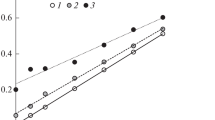Abstract
The limitations of various methods of soil analysis are discussed. The total analysis of an element gives a simple figure which is, however, useless for diagnositic purposes since nutrient availability differs in various soil fractions. Since the transfer coefficient applied to soil pollutants is based on total soil analysis, it also has no diagnostic value. The use of soil extractants is empirical and is only as good as the calibration curve. It should, therefore, only be applied to those soils for which a good calibration curve has been shown to exist. The scientific approach of Schofield in proposing nutrient potentials is basically correct, but it fails to fully characterize the nutrient availability in soils. Difficulties are of a fundamental nature or are soil or plant related.
A possible means of improvement may be a soil classification which is geared towards soil fertility. Soils which react similarly to nutrients should be combined in classification units. For these units, detailed information on the reaction behavior must be obtained. A few simple analyses might suffice to show how a specific field fits into this reaction pattern. Based on the thorough knowledge of the soil (especially its reaction pattern) it is then possible to quantitatively predict for a specific crop plant the changes that occur when nutrients are removed by uptake or added by fertilization.
Similar content being viewed by others
References
Asher CJ and Edwards DG (1983) Modern solution culture techniques.In Encyclopedia of Plant Physiology, new series, Pirson A and Zimmermann MH (eds) Vol. 15A: 94–119.
Asher CJ and Loneragan JF (1967) Response of plants to phosphate concentration in solution culture; I. Growth and phosphorus content. Soil Sci 103: 225–233.
Asher CJ and Ozanne PG (1967) Growth and potassium content of plants in solution cultures maintained at constant potassium concentrations. Soil Sci 103: 155–161.
Beckett PHT (1964) Studies on soil potassium: I. Confirmation of the ratio law: Measurement of the potassium potential. J Soil Sci 15: 1–8.
Beckett PHT (1964) Studies on soil potassium: II. The immediate Q/I relations of labile potassium in the soil. J Soil Sci 15: 9–23.
Claasen N and Jungk A (1982) Kaliumdynamik im wurzelnahen Boden in Beziehung zur Kaliumaufnahme von Maispflanzen. Z Pflanzenernähr Bodenkd 145: 513–525.
Ingestad T and Ågren GI (1988) Nutrient uptake and allocation at steady-state nutrition. Physiol Plant 72: 450–459.
Jungk A, Claasen N and Kuchenbuch R (1982) Potassium depletion of the soil-root interface in relation to soil parameters and root properties. In Proceedings of the Ninth International Plant Nutrition Colloquium, Warwick, England. A Scaife (Ed) 250–255. Commonw Agric Bur, Farnham Royal, Bucks.
Le Roux J and Sumner ME (1968) Labile potassium in soils: I. Factors affecting the quantity-intensity (Q/I) parameters. Soil Sci 106: 35–41.
Le Roux J and Sumner ME (1968) Labile potassium in soils: II. Effect of fertilization and nutrient uptake on the potassium status of soils. Soil Sci 106: 331–337.
Liebig J von (1858) Ueber einige Eigenschaften der Ackerkrume. Ann Chemie und Pharm 105: 109–144.
Loneragan JF and Asher CJ (1967) Response of plants to phosphate concentration in solution culture: II. Rate of phosphate absorption and its relation to growth. Soil Sci 103: 311–318.
Parra MA and Torrent J (1983) Rapid determination of the quantity-intensity relationships using a potassium-selective ion electrode. Soil Sci Soc Am J 47: 335–337.
Scheffer F and Schachtschabel P (1989) Lehrbuch der Bodenkunde, F. Enke, Stuttgart, 491 p.
Schofield RK (1955) Can a precise meaning be given to ‘available’ soil phosphorus. Soils Fert 18: 373–375.
Silberbush M and Barber SA (1983) Sensitivity of simulated phosphorus uptake to parameters used by a mechanistic-mathematical model. Plant Soil 74: 93–100.
Sparks DL and Liebhardt WC (1981) Effect of long-term lime and potassium applications on quantity-intensity (Q/I) relationship in sandy soil. Soil Sci Soc Am J 45: 786–790.
Sparks DL and Liebhardt WC (1982) Temperature effects on potassium exchange and selectivity in Delaware soils. Soil Sci 133: 10–17.
Sumner ME and Marques JM (1966) Ionic equilibria in a ferrallitic clay: Specific adsorption sites for K. Soil Sci 102: 187–192.
Yu TR, Beyme B and Richter J (1989) Direct determination of potassium-calcium activity ratio in soils with two ion-selective electrodes. I. Mehod of determination. z. Pflanzenernähr Bodenk 152: 353–358.
Yu TR, Beyme B and Richter J (1989) Direct determination of potassium-calcium activity ratio in soils with two ion-selective electrodes. II. Interactions of potassium and calcium ions with soils. Z Pflanzenernähr Bodenk 152: 359–365.
Author information
Authors and Affiliations
Rights and permissions
About this article
Cite this article
Oertli, J.J. Limitations to the diagnostic information obtained from soil analyses. Fertilizer Research 26, 189–196 (1990). https://doi.org/10.1007/BF01048756
Issue Date:
DOI: https://doi.org/10.1007/BF01048756




